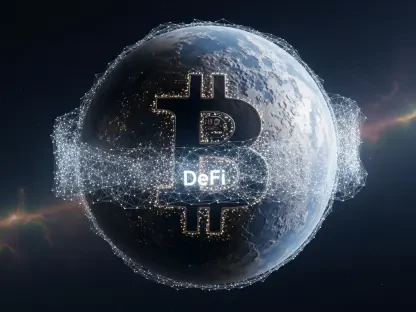The financial landscape is undergoing a remarkable transformation, with digital wallets emerging as a dominant force in the realm of global payment methods. With the projected increase in digital payments from $1.7 trillion in 2014 to an astounding $33.5 trillion by 2030, it is evident that consumers worldwide are rapidly embracing the convenience and efficiency of digital wallets. This surge is attributed to the rise of digital wallets, buy now, pay later services, and account-to-account payments. The transition from traditional payment methods to digital alternatives reflects a significant shift in consumer behavior and technological advancements, prompting an important discussion about the future of global payments.
Regional Disparities in Digital Wallet Adoption
A key aspect of the growing popularity of digital wallets is the differing rates of adoption across various regions. In the United States, consumers use mobile wallets for 39% of online purchases and 16% of in-person transactions. This is in stark contrast to the Asia-Pacific region, where mobile wallet usage is considerably higher, accounting for 81% of online transactions and 59% of in-person transactions. Despite the slower uptake in the U.S., credit, debit, and prepaid cards still account for a significant 67% of all consumer purchases. Notably, the use of cash has significantly declined, dropping from 44% of in-store spending in 2014 to an anticipated 15% in 2024.
The Asia-Pacific region’s higher adoption rates of digital wallets exemplify the rapid technological advancements and evolving consumer expectations in those markets. This trend is indicative of a broader global shift towards digital payments, with consumers increasingly valuing the convenience, security, and speed offered by these new technologies. Additionally, countries with low-cash use markets, such as South Korea and Sweden, are leading the way in the transition to digital payment methods, setting the stage for other regions to follow suit. The overarching trend is a decline in traditional payment methods like cash and credit cards, with digital wallets expected to dominate by 2030.
The Impact of Technological Advancements
Several factors contribute to the growing adoption of digital wallets, including the COVID-19 pandemic, advancements in smartphone technology, the growth of fintech, and evolving consumer expectations for convenience and security. The pandemic accelerated the transition to digital payments as consumers and businesses alike sought contactless payment solutions to minimize the risk of virus transmission. As a result, many individuals who were previously hesitant to adopt digital wallets began to recognize their advantages, leading to a substantial increase in their usage.
Smartphone technology has also played a crucial role in the rise of digital wallets. The proliferation of smartphones, combined with the development of secure mobile applications, has made it easier than ever for consumers to access and utilize digital wallets for their payment needs. Fintech companies have been pivotal in driving this transformation, continuously innovating and providing seamless, user-friendly solutions that cater to the demands of modern consumers. The convenience of being able to make quick, secure payments using just a mobile device has significantly altered the way people conduct transactions.
Security Concerns and Market Dynamics
Despite their popularity, digital wallets are not without their challenges. One of the main concerns is the security of these payment methods. Digital wallets often contain more personal data than traditional cards, making them enticing targets for fraudsters. According to a J.D. Power survey in 2023, digital wallet usage increased from 12% in 2022 to 48% in 2023, driven primarily by users under the age of 40. Cybersecurity experts caution that the increasing amount of sensitive information stored within digital wallets necessitates robust security measures to protect against potential threats.
Moreover, the funding sources for digital wallets vary by region. In the U.S. and Australia, a significant portion (70%) of digital wallets are funded by cards, followed by the U.K. (67%), India (56%), Brazil (53%), and China (46%). U.S. attachment to cash continues to wane, falling from 20% of transaction value in 2014 to a projected 9% by 2030. The U.S. is categorized as a medium-cash use country, in contrast to high-cash use markets like Germany and Nigeria, and low-cash use markets like South Korea and Sweden.
Looking at the market share perspective, Visa leads with 63% of the card market, followed by Mastercard at 25% and American Express at 9%. Discover Financial Services holds 1% but could impact market dynamics if its sale to Capital One is approved. These market statistics underscore the significance of card networks in the current payment ecosystem and the potential shifts that may occur as digital wallets continue to gain traction.
Future Considerations and Final Thoughts
The financial landscape is witnessing a dramatic transformation, with digital wallets rising as a leading force in global payment methods. Predictions indicate that digital payments will soar from $1.7 trillion in 2014 to a staggering $33.5 trillion by 2030. This rapid growth showcases how consumers globally are quick to embrace the ease and effectiveness of digital wallets. Key contributors to this surge include the proliferation of digital wallets, the popularity of buy now, pay later services, and the increase in account-to-account payments. The shift from traditional payment methods to digital ones signifies a notable change in consumer habits and technological progress, fueling an essential conversation about the future of global payments. As technology continues to evolve, the convenience and security offered by digital wallets will likely become an even more integral part of everyday financial transactions. This ongoing transition underscores the importance of adapting to technological advancements to stay relevant in the future economy.









